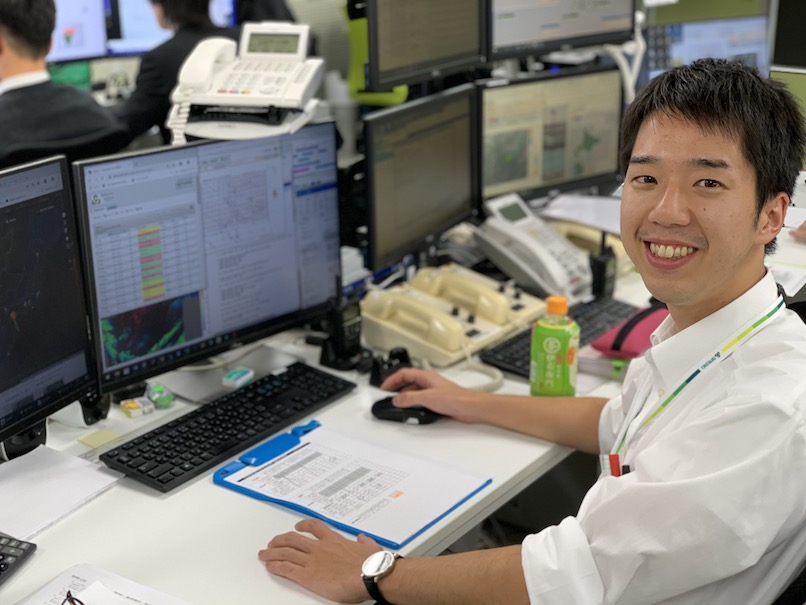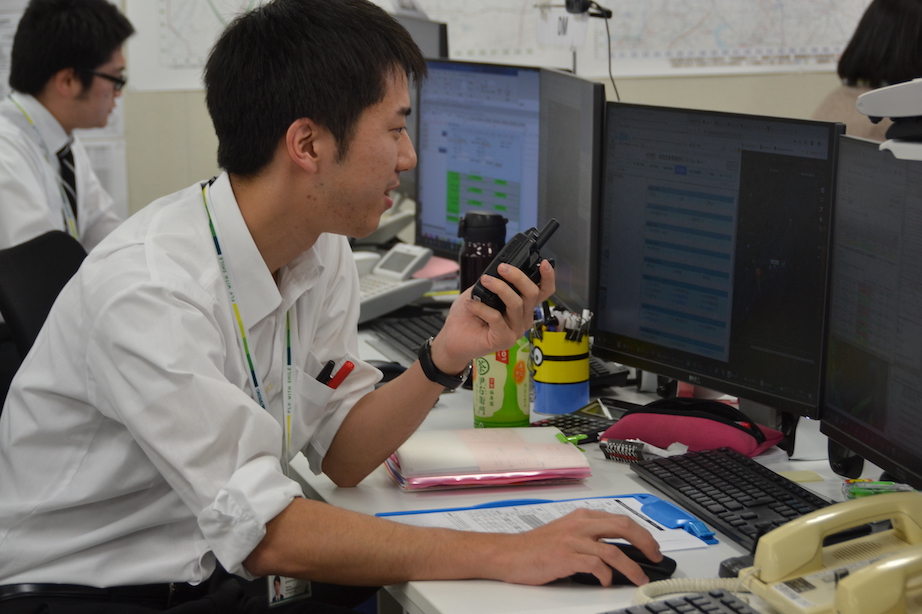We interviewed Mr. Hiraku Nakamura of the Operations Management Department of SPRING JAPAN, an ARVI customer.

Mr. Hiraku Nakamura
Solution points gained from ARVI implementation
●Operational management: In the past, it was necessary to keep an eye on the telegrams for sudden deterioration of current conditions at the airport, but now the situation can be immediately grasped thanks to the visualization provided by ARVI.
●Crew: After the briefing on the PC at the time of departure, the only other means of checking weather information in the cockpit was a portable terminal such as an iPad, which required a lot of time and effort.
■Please tell us about the background of the introduction of ARVI.
As the scale of our operations expanded, we sought software that could visualize weather information, especially PIREP information, in an easy-to-understand manner. As the number of flights increased and the time allocated to each flight became shorter, we were looking for solutions to flight support issues, such as how to efficiently communicate echo and PIREP information to in-flight flights.
Due to the nature of the work, efficiency and speed are required, and not a second of time can be wasted in gathering, confirming, judging, and communicating information. PIREP is information that is frequently requested by pilots, so it would be more efficient to collect information if it were displayed in an easy-to-understand visual manner, and if such an innovative system existed, we would like to introduce it.
Before I learned about ARVI, the only software that could visualize weather information was provided by weather companies or created by the airlines themselves, so I wanted to see what other options were available.
■ The benefit of being able to check necessary information at a glance is significant.
The weather information we use comes in the form of text (telegrams), so we have to read the text information and convert it in our minds to see (view) the weather conditions. We read the text information from top to bottom, check the weather map to see the movement of low and high-pressure systems to grasp the overall atmospheric flow and check the clouds on satellite photos. And what about rain clouds? What about radar echoes? How high is the echo top? … In this way, you have to open several screens and look at them at the same time. In this respect, ARVI allows us to check the information we want to know in a single picture (visualization), and for those of us who have a lot of information to check, it is very nice to know everything in an instant. Work that used to take two to three minutes can be completed in about 10 seconds with ARVI because all we have to do is click. As a result, we can streamline our work and use the time saved to study.

■ The point is to be “fast” and operate quickly and not be frustrated
When multiple pieces of information can be viewed on the same screen at the same time, as mentioned above, the device tends to run sluggishly and take a long time to display, which is slow and frustrating in most cases, but ARVI is smooth and crisp.
The echo display is also pleasantly fast, and this sense of speed is much appreciated in situations where information must be conveyed in a short amount of time.
I also feel that it is a great advantage to be able to quickly access various information on devices such as the iPad, which I have recently been using in-flight, rather than assuming a computer environment.
■High expectations for interactions with pilots
What is the movement of rain clouds at XXX airport?” When will the airport be closed due to thunderstorms? Currently, all of the information requested by pilots can only be confirmed through us on the ground. It is frustrating that information can only be obtained through human intervention.
It is by far faster and more reliable to have this information confirmed directly by the pilots themselves who are seeking it. In the future, Wi-Fi will be available in the cockpit, and pilots will be able to check information with their own eyes before flying. However, the problem with in-flight Wi-Fi is that the lines are too narrow, so the focus will be on how to get as much and as much information as possible within the limitations of the system. The emphasis is on how to get as much information as possible while being within the limitations of the Wi-Fi connection. In this respect, I have high expectations for ARVI as I have actually used it.
Many pilots feel that the introduction of ARVI has “helped me access a lot of information that I never thought to access in the first place” and that “ARVI is innovative”.
■Excellent UI/UX. Good at visualization, high expectations for the ARVI’s future
It may be possible with other systems in terms of being able to quickly check a lot of information, but one of ARVI’s features is that it is “easy to see,” and there are many moments when I find it easy to understand and convenient. With the previous data, rain echoes and echo tops were rough and difficult to use, but ARVI displays the information beautifully and is easy to convey. It would be too detailed to mention other things that have helped us, but I would say that ARVI has excellent visualization technology, such as easy-to-understand cross-sectional views. It is fast, easy to see, easy to understand, and therefore easy to use. I hope you will continue to support the evolution and change of information in the industry as a whole in the future. I have great expectations for the future!
I am very happy and encouraged to hear that ARVI’s areas of expertise are proving useful in practice. Thank you, Mr. Nakamura.
We spoke with
SPRING JAPAN Co., Ltd.
SPRING JAPAN was established in September 2012 with an investment from Spring Airlines Co. the largest LCC in China, in order to provide safe, secure, and affordable services to as many customers as possible.
Based at Narita Airport, SPRING JAPAN currently operates a fleet of six B737-800 aircraft to ten destinations in Japan and abroad (as of October 31, 2020). SPRING JAPAN will continue to evolve into an LCC that is more than just an airline, but one that supports the “creation of exciting air travel”.
Thanks to your support, SPRING JAPAN celebrated its 6th anniversary on August 1, 2020.
In response to the spread of the new coronavirus, we are now promoting the “3S PROTECTION“environmental sanitation measures in line with the 3S management principle in our logo and thoroughly implementing measures to prevent infectious diseases in order to ensure that all our customers can use our services with peace of mind.
SPRING JAPAN will continue to support new everyday life and new travel styles with “3S PROTECTION“. They will continue to support their customers’ “exciting air travel” by providing safe and secure flights with the same comfort and the same passion, and with the same smile as always.
SPRING JAPAN will work even harder toward the full resumption of flights. They will continue to pursue and improve our hygiene measures to create a safe and secure environment while realizing and providing a new form of air travel.

Interviews and photos courtesy of SPRING JAPAN Co. Ltd.
